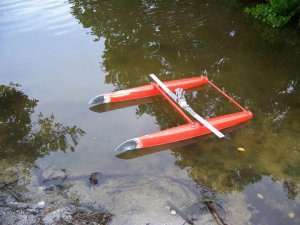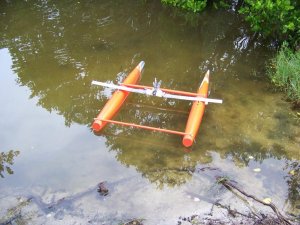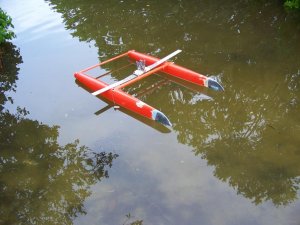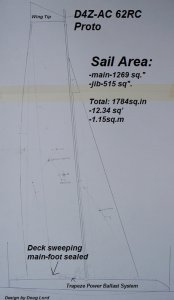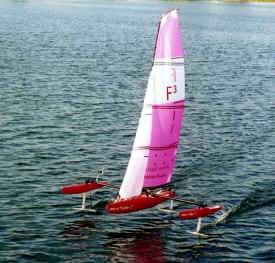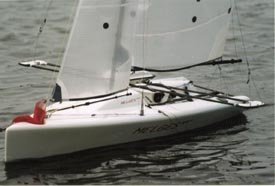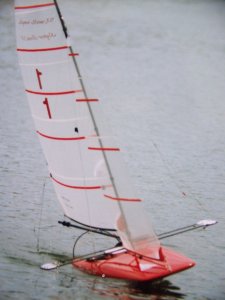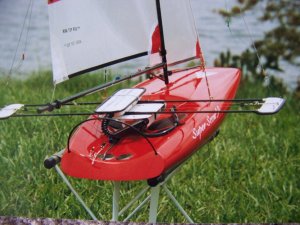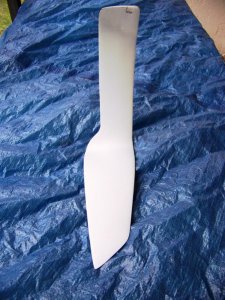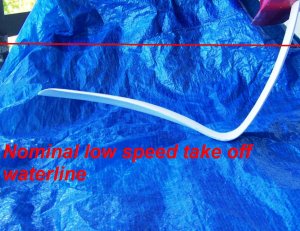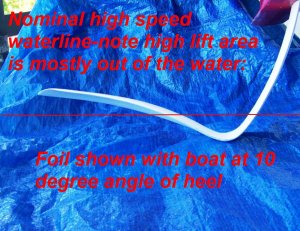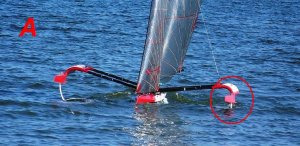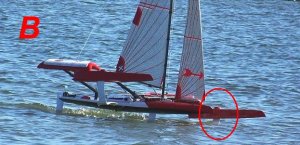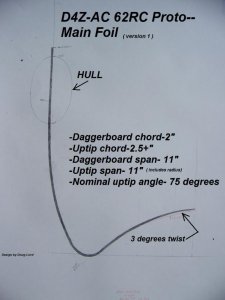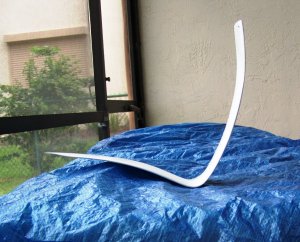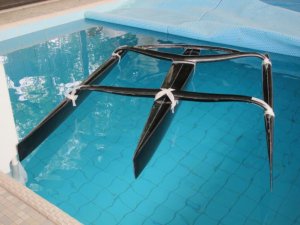First I apologize for not posting this in German. I don't speak the language and I don't trust "Google Translate". Maybe there is some way we could work out the translation issues so we could all communicate with each other?
Some of us are trying to put together a radio controlled AC class-the rules are being discussed here:
http://www.rcgroups.com/forums/showthread.php?t=2180752
Your input would be most welcome! There is no rush in getting this project together. Issues regarding transport, wings, hydrofoils, electronics and exactly how the class rules should be worded need to be worked out. One of the most important things, in beginning this class, is to have the focus on developing a race boat for sailors who want to race, not necessarily build or do development work. So one of our considerations is to have "one design" rigs, possibly one design foils and IF a movable ballast system is used it would also be one design. The idea is to make the Class as inclusive as possible and have first class performance attainable by all who participate.
--------
I'm putting together a smaller 51"(1.31m) prototype to test rigs and foils. It is a 15 year old platform for a Formula 48 cat that just had each bow extended. The foils will be UptiP foils, based on the foil invented by TNZ with refinements similar to the Flying Phantom ,GC32 and the Fire Arrow Test Model where the foils have been very successfully used as ama foils. The foil design on those boats reduces rake adjustment to ,basically, "set and forget". I'm going to test the foils using radio adjustable rake and, for the sake of simplicity, a four foil configuration will be tested instead of retracting the windward foil. Retracting the windward foil may also be tested. The rake-adjust system will also allow the testing of downforce from the windward foil, though the boat is probably too narrow for that to work efficiently.The foils may be one design, to encourage participation, or the rule may stipulate that custom foils can be used as long as they are available to all class members. A movable ballast system will be tested. A wing rig will be used and will be one design and soft rigs will be allowed initially. This is to ensure that the wing rig is actually faster than the best soft rig.
I'm familiar with the history of RC multihulls, but this is the first time in history "we" have had a foiling multihull class sailing for the America's Cup! I truly believe if we work on this together that we can come up with an historic RC foiling multihull.
So I'm using my 51.5" platform to put together a foil system to prove that a simple system that anyone can use is possible. I don't expect much to happen until
there is video of this prototype foiling-which it will do in very light air.
Picture of the 51.5" D4Z /AC 62 prototype under development now:
Some of us are trying to put together a radio controlled AC class-the rules are being discussed here:
http://www.rcgroups.com/forums/showthread.php?t=2180752
Your input would be most welcome! There is no rush in getting this project together. Issues regarding transport, wings, hydrofoils, electronics and exactly how the class rules should be worded need to be worked out. One of the most important things, in beginning this class, is to have the focus on developing a race boat for sailors who want to race, not necessarily build or do development work. So one of our considerations is to have "one design" rigs, possibly one design foils and IF a movable ballast system is used it would also be one design. The idea is to make the Class as inclusive as possible and have first class performance attainable by all who participate.
--------
I'm putting together a smaller 51"(1.31m) prototype to test rigs and foils. It is a 15 year old platform for a Formula 48 cat that just had each bow extended. The foils will be UptiP foils, based on the foil invented by TNZ with refinements similar to the Flying Phantom ,GC32 and the Fire Arrow Test Model where the foils have been very successfully used as ama foils. The foil design on those boats reduces rake adjustment to ,basically, "set and forget". I'm going to test the foils using radio adjustable rake and, for the sake of simplicity, a four foil configuration will be tested instead of retracting the windward foil. Retracting the windward foil may also be tested. The rake-adjust system will also allow the testing of downforce from the windward foil, though the boat is probably too narrow for that to work efficiently.The foils may be one design, to encourage participation, or the rule may stipulate that custom foils can be used as long as they are available to all class members. A movable ballast system will be tested. A wing rig will be used and will be one design and soft rigs will be allowed initially. This is to ensure that the wing rig is actually faster than the best soft rig.
I'm familiar with the history of RC multihulls, but this is the first time in history "we" have had a foiling multihull class sailing for the America's Cup! I truly believe if we work on this together that we can come up with an historic RC foiling multihull.
So I'm using my 51.5" platform to put together a foil system to prove that a simple system that anyone can use is possible. I don't expect much to happen until
there is video of this prototype foiling-which it will do in very light air.
Picture of the 51.5" D4Z /AC 62 prototype under development now:

